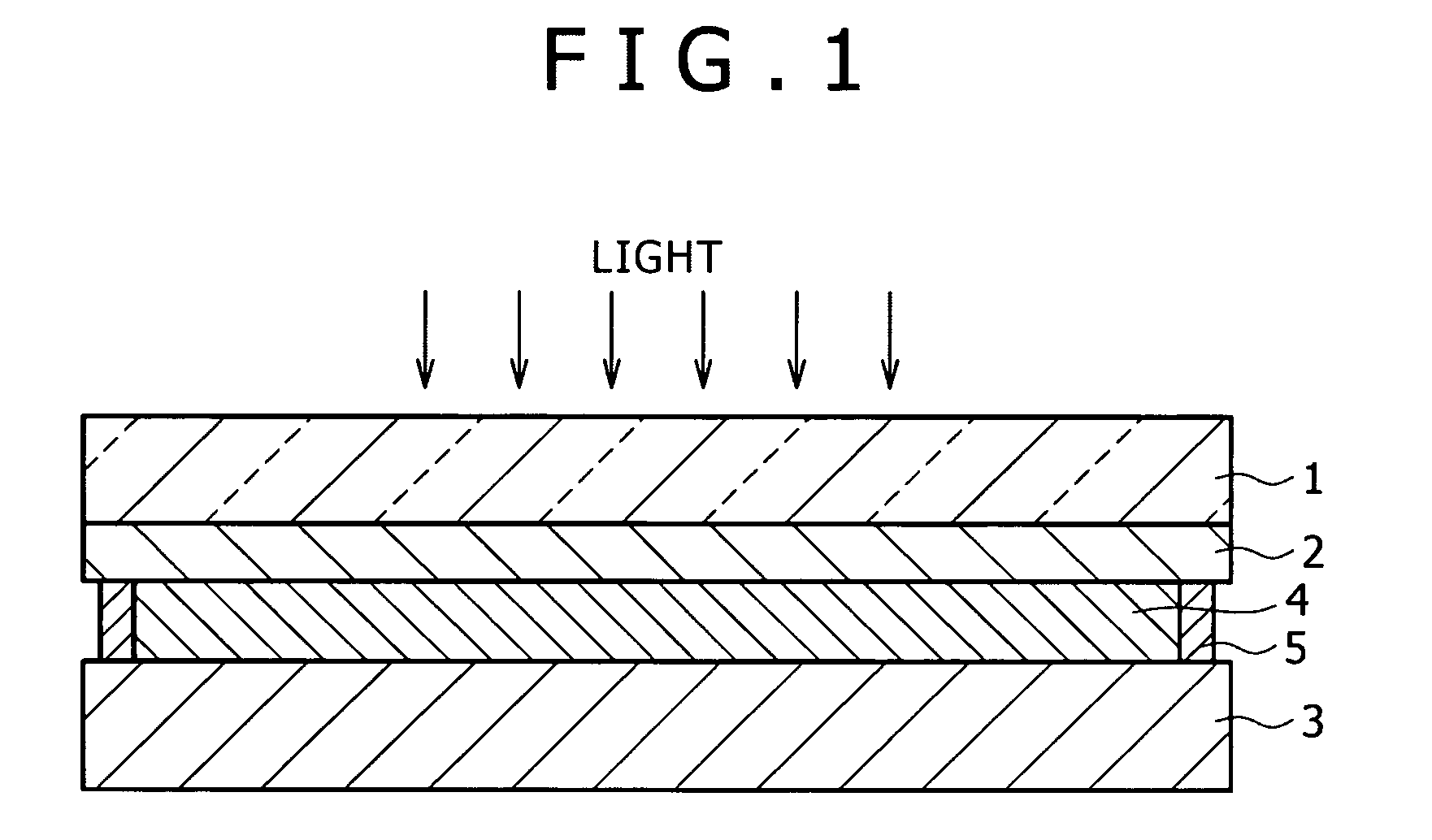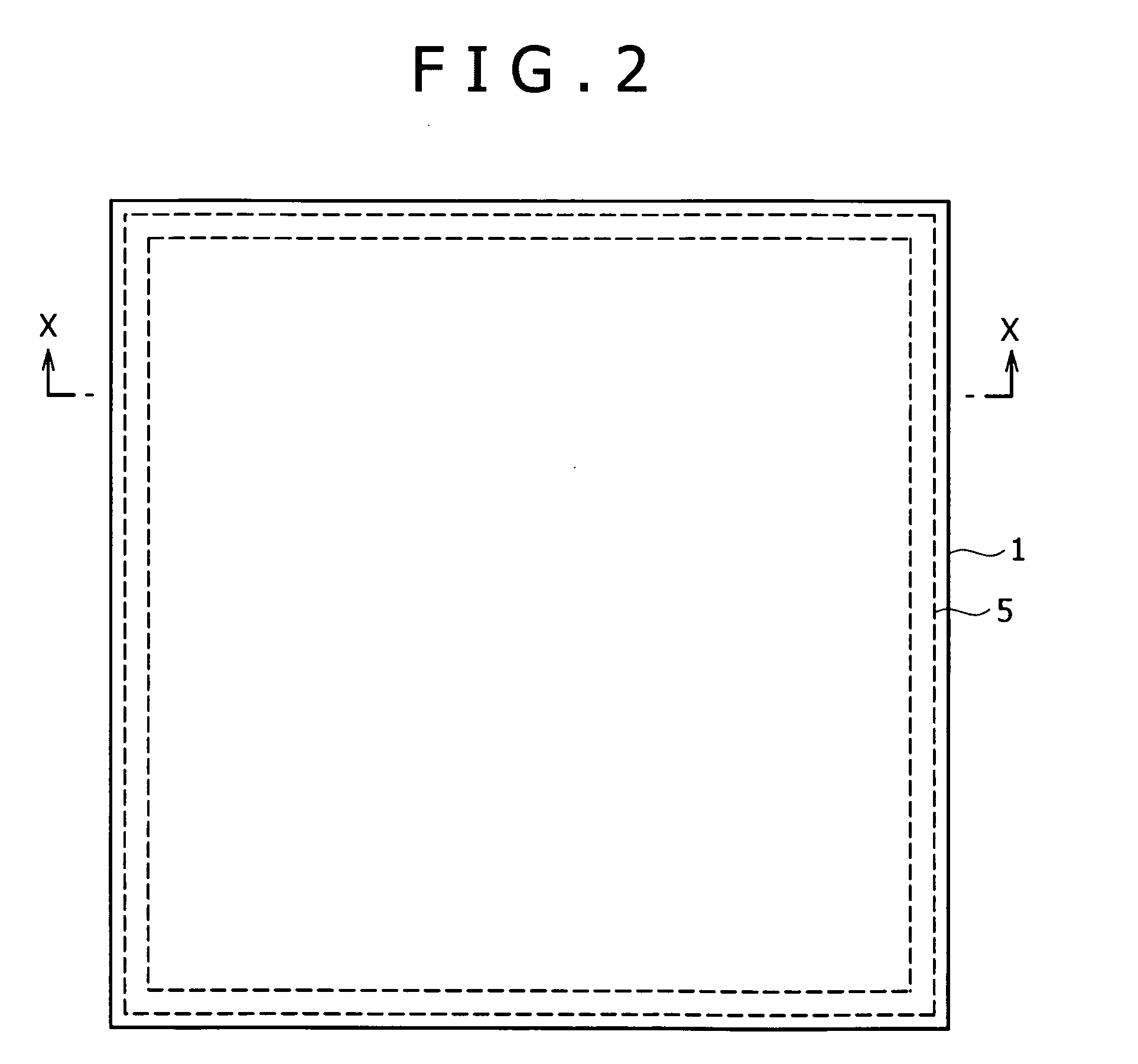Dye-sensitized photoelectric conversion device and method of manufacturing the same
a technology of photoelectric conversion device and dye sensitization, which is applied in the manufacture of final products, basic electric elements, electrolytic capacitors, etc., can solve the problems of increasing dependence on these kinds of energy, increasing the risk of radioactive contamination of atomic energy, and increasing the risk of atomic energy use, so as to reduce the strength and durability. , the effect of preventing the provision of such a feed por
- Summary
- Abstract
- Description
- Claims
- Application Information
AI Technical Summary
Benefits of technology
Problems solved by technology
Method used
Image
Examples
example 1
[0067]A transparent conductive substrate was prepared as follows. An FTO substrate (sheet resistance: 10Ω / □) for use in amorphous solar cell, produced by Nippon Sheet Glass Co., Ltd., was processed into the size of 25 mm×25 mm×(t) (thickness 1.1 mm), and the processed FTO substrate was then subjected to ultrasonic cleaning by sequentially using acetone, an alcohol, an alkali cleaning liquid, and ultrapure water, followed by drying.
[0068]The FTO substrate was coated with a titanium oxide paste, produced by Solaronix, by use of a screen printing machine with a screen mask shaped to have a diameter of 5 mm. In coating with the paste, a 7 μm-thick layer of a transparent Ti-Nanoxide TSP paste and a 13 μm-thick layer of Ti-Nanoxide DSP containing scattering particles were sequentially formed in this order from the FTO substrate side, to obtain a porous titanium oxide film in a total thickness of 20 μm. The porous titanium oxide film was baked in an electric furnace at 500° C. for 30 min, ...
example 2
[0089]After forming an FTO film on a glass substrate, the FTO film was patterned by etching to form an eight-stripe pattern with 0.5 mm-wide gaps between the stripes. Thereafter, the resulting assembly was subjected to ultrasonic cleaning by sequentially using acetone, an alcohol, an alkali cleaning liquid, and ultrapure water, followed by sufficient drying.
[0090]A titanium oxide paste produced by Solaronix was applied onto the glass substrate in an eight-stripe pattern, each stripe measuring 5 mm in width and 40 mm in length (total area: 16 cm2) by use of a screen printing machine. In applying the paste, a 7 μm-thick layer of a transparent Ti-Nanoxide TSP paste and a 13 μm-thick layer of Ti-Nanoxide DSP containing scattering particles were sequentially formed in this order from the glass substrate side, to obtain a porous TiO2 film in a total thickness of 20 μm. The porous TiO2 film was baked in an electric furnace at 500° C. for 30 min, and allowed to cool. Thereafter, the porous ...
example 3
[0114]After forming an FTO film on a glass substrate, the FTO film was patterned by etching to form an eight-stripe pattern. Thereafter, the resulting assembly was subjected to ultrasonic cleaning by sequentially using acetone, an alcohol, an alkali cleaning liquid, and ultrapure water, followed by sufficient drying.
[0115]A titanium oxide paste produced by Solaronix was applied onto the glass substrate in a pattern of eight stripes, each measuring 5 mm in width and 40 mm in length (total area: 16 cm2), by use of a screen printing machine. In applying the paste, a 7 μm-thick layer of a transparent Ti-Nanoxide TSP paste and a 13 μm-thick layer of Ti-Nanoxide DSP containing scattering particles were sequentially formed in this order from the glass substrate side, to obtain porous titanium oxide films in a total thickness of 20 μm. The porous titanium oxide films were baked in an electric furnace at 500° C. for 30 min, and allowed to cool. Thereafter, the porous titanium oxide films wer...
PUM
 Login to View More
Login to View More Abstract
Description
Claims
Application Information
 Login to View More
Login to View More - R&D
- Intellectual Property
- Life Sciences
- Materials
- Tech Scout
- Unparalleled Data Quality
- Higher Quality Content
- 60% Fewer Hallucinations
Browse by: Latest US Patents, China's latest patents, Technical Efficacy Thesaurus, Application Domain, Technology Topic, Popular Technical Reports.
© 2025 PatSnap. All rights reserved.Legal|Privacy policy|Modern Slavery Act Transparency Statement|Sitemap|About US| Contact US: help@patsnap.com



